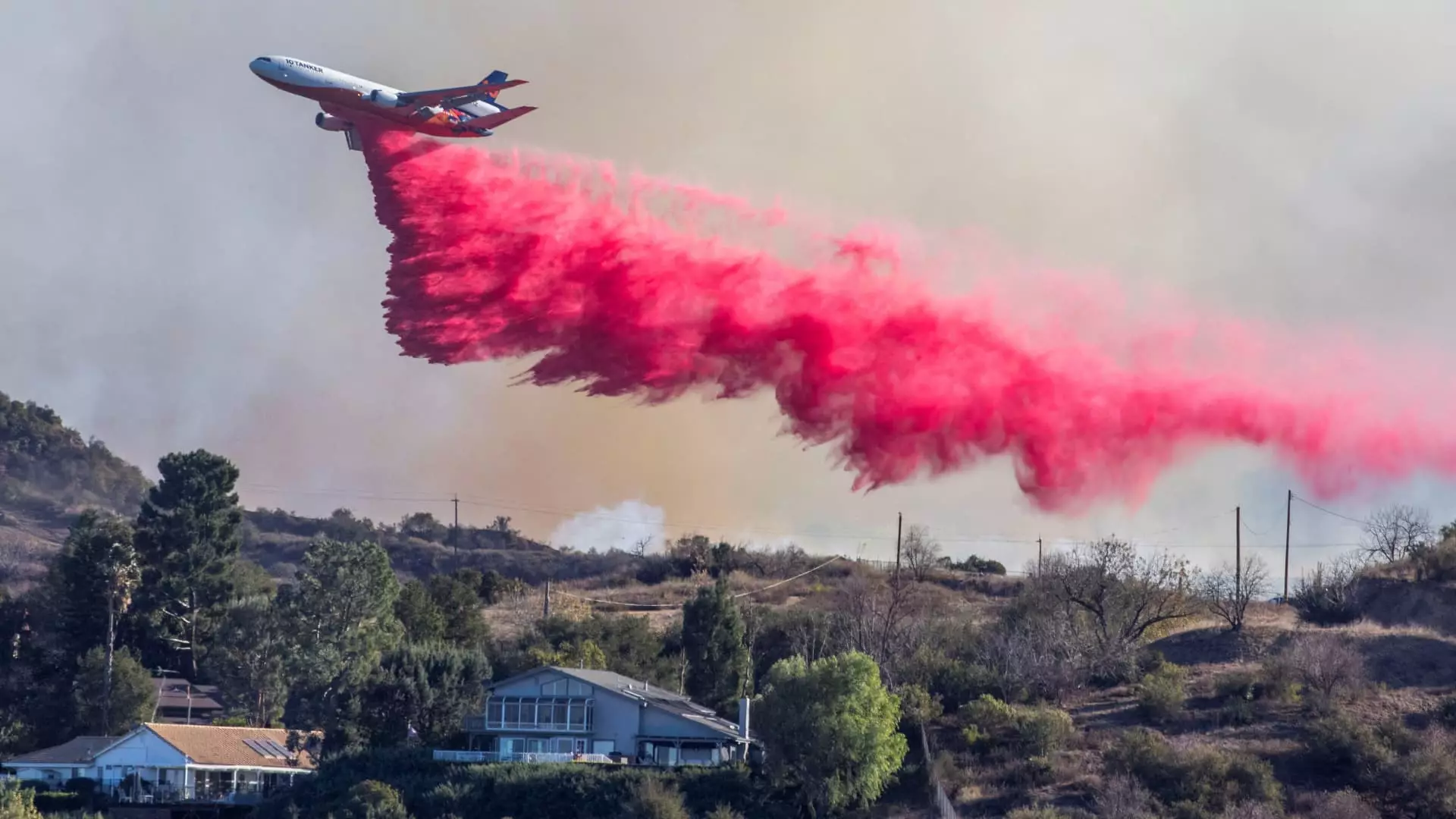The recent surge in wildfires across the western United States, particularly in California, has caught the attention of media and environmental agencies alike. As wildfires rage, threatening the lives and homes of thousands, the strategic response from firefighting organizations is put to the test. Despite the notion that winter should be an off-season for such operations, the escalating intensity and year-round nature of these devastating events have prompted both governmental and private sectors to reevaluate their firefighting capabilities, especially in aerial support.
The landscape of aerial firefighting in the U.S. is diverse, primarily encompassing public agencies like the California Department of Forestry and Fire Protection (Cal Fire) and private contractors specializing in aerial support. With agencies like Cal Fire managing a robust fleet of over 60 aircraft, the reliance on private operators has become increasingly integral. Companies such as 10 Tanker Air Carrier, boasting fleets of converted aircraft like DC-10s, play a crucial role in combating these blazes. Joel Kerley, CEO of 10 Tanker, noted that demand for firefighting air support is beginning to outstrip the available resources, highlighting the urgent need for expanded capabilities in the face of worsening wildfire seasons.
Challenges in the Aerial Firefighting Sector
The operational landscape for aerial firefighting faces numerous challenges, including the seasonal nature of contracts and availability of aircraft for immediate deployment. Traditionally, aerial firefighting contracts run from April to November, but the ongoing severity and unpredictability of wildfires have shifted this paradigm. The recent fires, such as the Palisades and Eaton fires, have showcased the fierce competition for aerial resources amid increased demands—demand that continues to rise year-round, contradicting the notion of an off-season. Many companies find themselves in a constant state of adaptation; for instance, maintenance schedules for aircraft can hinder immediate response as the need for firefighting urgency clashes with routine upkeep.
According to the United Nations Environment Program, the frequency and intensity of wildfires are expected to escalate in the 21st century, compelling both public and private sectors to adapt quickly. Data from the United States Environmental Protection Agency indicates a disturbing trend: the area affected by wildfires has increased significantly over the past two decades. This is exacerbated by extreme weather conditions, including hurricane-force winds that contribute to rapid fire spreading. The environmental changes driven by climate change are prompting countries that struggle with wildfires—such as Australia—to invest in augmenting their own firefighting fleets.
To address growing needs, the firefighting sector faces the dual challenge of upgrading aging fleet portfolios and converting new aircraft for use in suppressing wildfires. The conversion of jets into firefighting tankers is a meticulous process that can take up to 18 months, limiting the rapid expansion of resources. Companies investing in research and development, like De Havilland, are working on advanced models to meet increasing global demand. Innovations in aircraft technology, such as improved water-scooping capabilities and enhancements for extreme environments, reflect a significant bet on the future of aerial firefighting. Remarkably, the new DHC-515 model, scheduled for rollout in 2028, aims to deliver efficiency and effectiveness tailored for 21st-century fires.
The Human Element: Pilots and Mechanics
While the focus often gravitates toward aircraft, the human element remains paramount in aerial firefighting. Pilots come from varied backgrounds, including military and commercial aviation, bringing a rich diversity of experience to firefighting missions. Amidst turbulent skies and challenging conditions, their expertise is crucial, emphasizing safety and accuracy in water and retardant drops. Each DC-10 operated by firms like 10 Tanker is supported by a team of skilled mechanics, ensuring that these aircraft remain ready for immediate deployment. The complexities of aerial system operation are without question, illustrating a unique niche for professionals in the firefighting community.
As wildfires continue to threaten lives, properties, and ecosystems, the firefighting community faces a mounting imperative to adapt to an evolving crisis. The combination of climate change, increasing demands for aerial support, and the need for technological advancements places significant pressure on both public agencies and private contractors. Meeting these challenges requires a concerted effort—collectively, we must embrace innovation and build resilience blocks within our firefighting frameworks to safeguard communities in the face of uncertainty. The fires may be fierce, but with strategic investment and collaboration, there remains hope for a resolute response to the challenges ahead.

Leave a Reply